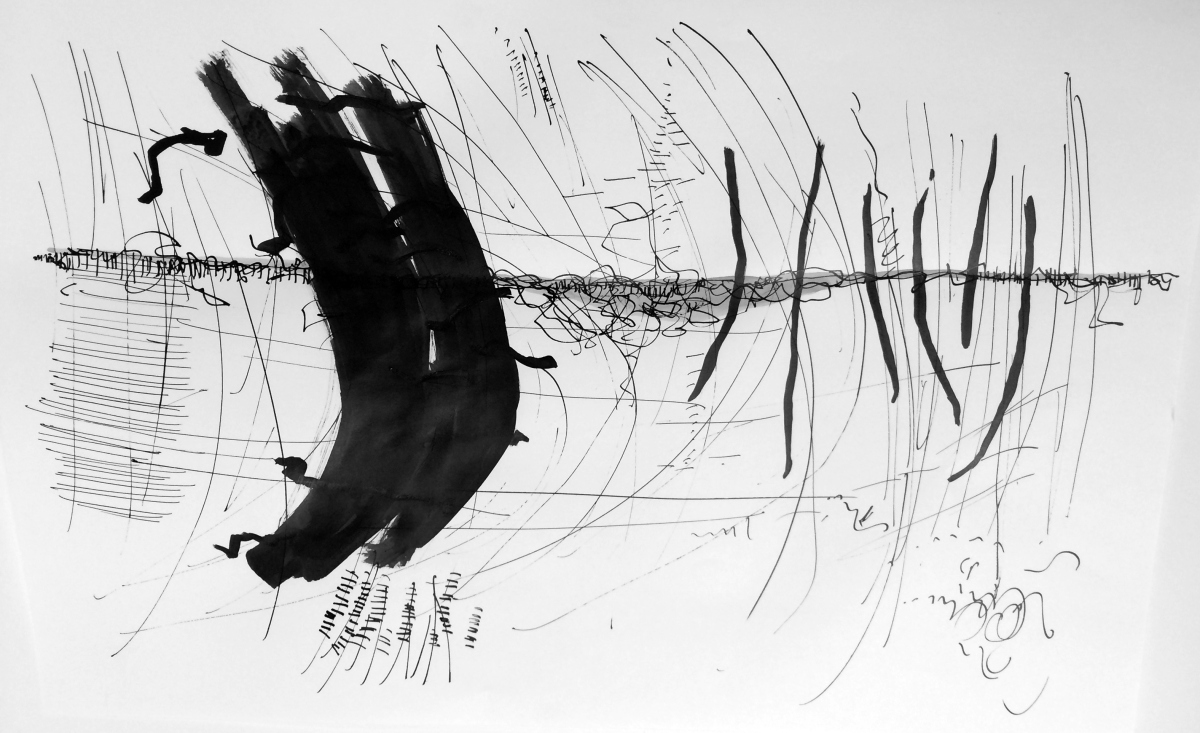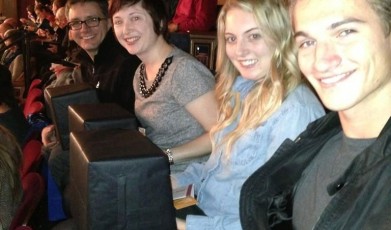Resident Update: Painter Carolyn Reed Barritt on Compagnie Marie Chouinard + Mariinsky Orchestra
Painter Carolyn Reed Barritt is a UMS Artist in Residence this season. We’ve asked five artists from across disciplines to take “residence” at our performances and to share the work these performances inspire.
Carolyn attended Compagnie Marie Chouinard on January 23rd, and Mariinsky Orchestra on January 25th, 2015. She shares her thoughts on both performances:
“M
arie Chouinard’s Gymnopedies begins languidly, with the dancers emerging nymph-like and naked from canvas pods, then morphs into a seemingly non-stop riot of movement and role playing that was sometimes so sexy it was almost uncomfortable and sometimes so childishly silly that the audience didn’t quite know whether or not to laugh. The Henri Michaux piece brought movement up to another hyper level and was reminiscent of a dance contest gone too far. The dancers, mimicking the projected ink blots of Michaux’s Mouvements, expressed the drawings in broken, jagged lines, with an awkward jerkiness that was softened with a fluid, serpentine beauty.”
On Mariinksy:
“Before entering the hall for Mariinsky, I was given a flyer by a person protesting the orchestra. Last weekend I read the New York Times’ interview with Gergiev. I know a little about the situation in Ukraine, but don’t know as much as I should. Reading neither the flyer or the Times interview really enlightened me as to Gergiev’s personal views or the views of anyone in the orchestra. But what I have heard and read about Ukraine was in my mind at the concert and I’m sure it tainted my experience that afternoon.”
Read the full post on Carolyn’s blog
Interested in learning more? Read our interview with Carolyn.
From Our Archives: Valery Gergiev
The Mariinsky Orchestra returns to UMS on January 24-25, 2015. The Mariinsky Orchestra (then Kirov Orchestra) first performed in Ann Arbor in 1992. In this 1998 photo from our archives, conductor Valery Gergiev listens to the orchestra in Hill Auditorium in preparation for their performance: 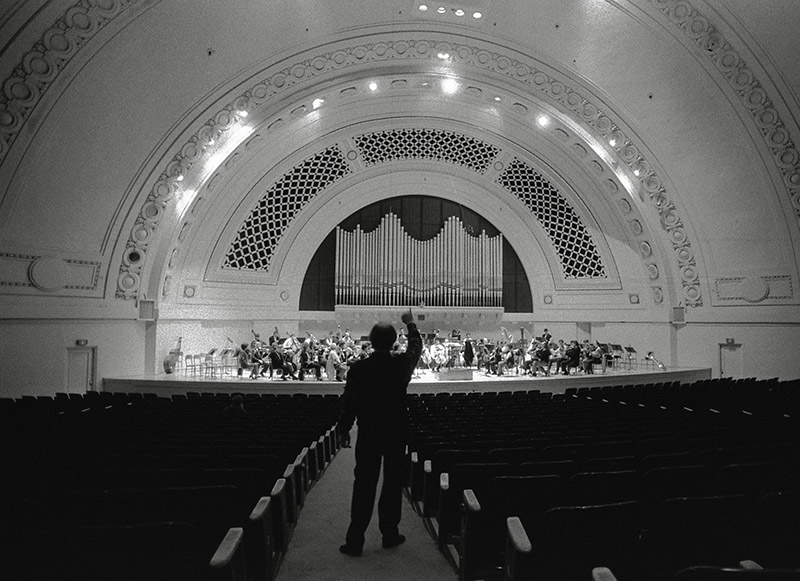 Interested in more from our archives? Check out our digital archives at umsrewind.org.
Interested in more from our archives? Check out our digital archives at umsrewind.org.
Prokofiev, Shostakovich, and the Year 1936
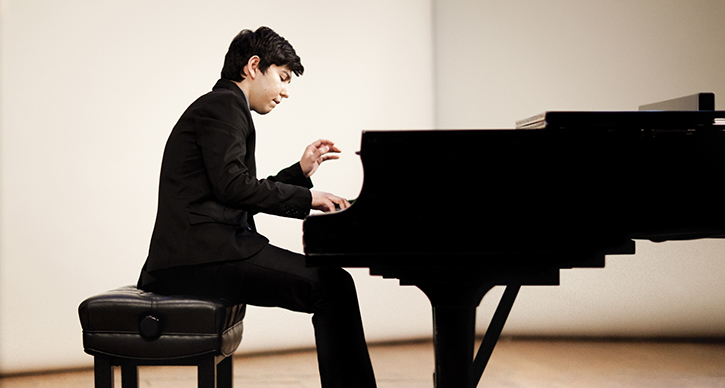
Pianist Behzod Abduraimov, who’ll perform with the Mariinsky Orchestra on January 24, 2015. The program features works by Prokofiev and Shostakovich. Photo by Ben Ealovega.
1936 was a portentous and dramatic year in the lives of Sergei Prokofiev and Dimitri Shostakovich. That summer, Prokofiev would move his family and career from Paris back to the Soviet Union under the impression that he would be able to compose relatively freely and continue touring abroad. However, when Prokofiev arrived in Moscow, his passport was confiscated. He was trapped. Meanwhile, in January of 1936, Shostakovich became a target of state-guided criticism and censorship. After rising to stardom in 1935, Shostakovich’s future as a composer was suddenly in jeopardy.
Prokofiev and Russia’s greatest expatriate composer
Prokofiev’s 1921 Piano Concerto No. 3, to be performed by the Mariinsky Orchestra on January 24, 2015 at Hill Auditorium, in many ways, symbolizes the brilliant career that he unwittingly relinquished when he returned home in 1936. Premiered by the Chicago Symphony Orchestra three years after Prokofiev’s original emigration from Russia, the work did not garner much attention for another year, when renowned conductor Serge Koussevitsky presented the piece in Paris. Prokofiev even performed alongside the London Symphony Orchestra when the concerto was first recorded in 1932.
The Piano Concerto No. 3 remains one of Prokofiev’s most popular works, and represents the composer’s appropriation and manipulation of Romantic styles and forms. Typical of Prokofiev’s piano music, the soloist’s part is impressively virtuosic and bumptious, particularly during the concerto’s rousing finale. The work’s three movements follow a traditional slow-fast-slow scheme, but its overall content is slightly more dissonant than Prokofiev’s later works, as he did not start to seek a simpler style until the mid-1930s.
Excerpt from Prokofiev’s Piano Concerto No. 3 performed by Mariinsky Orchestra. Courtesy of Mariinsky Label. Catalog also available via iTunes.
Although Prokofiev was already well known in the West in 1921, the Piano Concerto no. 3 certainly contributed to the international success he enjoyed from 1918-1936. When Prokofiev returned to Moscow, he did so believing his career would continue as it had. Exactly why Prokofiev left Paris is unknown, but one theory involves Shostakovich’s fall from grace. Despite Prokofiev’s fame in Europe and America, he had to compete with Rachmaninov and Stravinsky for the title of Russia’s greatest expatriate composer. Seeing that Shostakovich’s career might be over, Prokofiev may have thought he could return to Russia without a rival, and enjoy the national celebrity all to himself.
“At the same time Prokofiev returned to Russia a hero, Shostakovich’s career began to fall apart.”
Shostakovich’s challenges began less than a month into 1936, when, on January 28, the newspaper Pravda published a state-directed condemnation of his hugely successfully opera Lady Macbeth of the Mtsensk District entitled “Chaos Instead of Music.” The work had received 177 performances in Moscow and Leningrad in two years, but was suddenly derided by the mouthpiece of the Soviet state. Two similar articles hit newsstands in the following months, each criticizing Shostakovich’s music on the grounds that it violated Stalin’s cultural paradigm of “social realism.” At the same time Prokofiev returned to Russia a hero, Shostakovich’s career began to fall apart.
Shostakovich’s Symphony No. 4 immediately suffered from this new government criticism. Coming off the high of Lady Macbeth of the Mtsensk District, Shostakovich was halfway finished with the work when “Chaos Instead of Music” was published. Given Shostakovich’s new public circumstances, his friends and colleagues urged him to placate Pravda with the new symphony, which Shostakovich refused to do. He arranged a premiere performance with the Leningrad Philharmonic Orchestra for December 1936, but it was cancelled under ambiguous circumstances. The Symphony No. 4 did not receive it first performance until 1961, when the Soviet cultural ministry finally relaxed its expectations for Shostakovich and other Russian artists.
Excerpt from Shostakovich’s Symphony No. 4 performed by Mariinsky Orchestra. Courtesy of Mariinsky Label. Catalog also available via iTunes.
Unlike Shostakovich’s previous two symphonies, Symphony No. 4 (which is also part of the Mariinsky Orchestra’s program this January), does not feature vocalists, but rather relies on a large orchestra. It is an enormous, hour-long work that is filled with subtle suggestions of Mahler, whose music Shostakovich studied enthusiastically. The symphony’s form is unusual in its three movements of drastically imbalanced lengths. Almost bizarrely, the symphony’s outer movements are both over twenty minutes long and the inner movement lasts less than ten. However, in listening, the piece seems fairly continuous, and exhibits embryonic forms of the distinct musical characteristics Shostakovich would develop over the rest of his career.
Although Shostakovich’s Fourth Symphony was buried by the controversies of 1936, he rebounded quickly. The next year, Shostakovich premiered his landmark Symphony No. 5, which redeemed himself both with audiences and Soviet leadership. At the same time, Prokofiev was struggling with the unexpected realities of his new life in Russia. Not only was his passport terminated upon his return to the country, but he met much more resistance from the cultural ministry than he had anticipated.
For the remainder of Prokofiev and Shostakovich’s time as contemporaries, their careers were very much alike. Despite their differences, Prokofiev and Shostakovich shared in the classic dilemma of Soviet-era composers: the struggle to simultaneously satisfy one’s artistic desires and the desires of state.
Interested in learning more? Explore the Mariinsky Orchestra’s history in Ann Arbor through our archives.
Getting ready to tweet at Mariinsky Orchestra performance
Our distinguished panel of tweet seats participants getting ready to tweet at the Mariinsky Orchestra performance last weekend. Learn about our tweet seats project.
Our Top 5 Riotous Performances
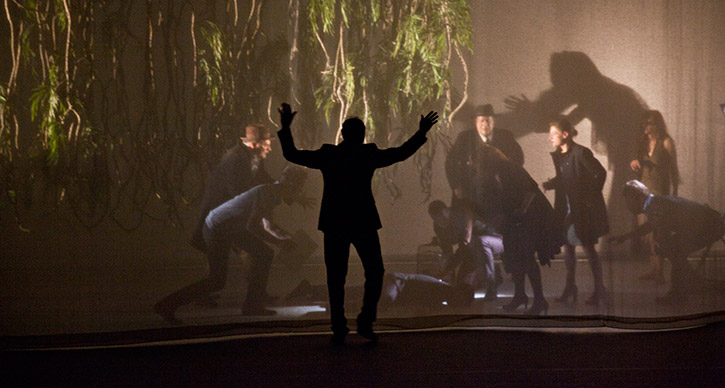
Photo: Scene from Six Characters in Search of an Author production by Théâtre de la Ville. Photo by JL Fernandez.
On Saturday, Théâtre de la Ville return to Ann Arbor to perform Luigi Pirandello’s Six Characters in Search of An Author. Luigi Pirandello won the Nobel Prize in Literature in 1934 for his “bold and brilliant renovation of drama and the stage,” and Six Characters, which dates from 1921, is one of his seminal plays, widely considered to be a precursor to the theater of the absurd movement to follow. However, the play caused a riot when it was first produced in Rome in 1921, and was even banned in Britain until 1928.
We were inspired to put together a list of our favorite performance riots. Add your own to the comments below.
1. Igor Stravinsky’s The Rite of Spring – May 1913, Paris
“The ballet was choreographed by the great Nijinsky,” Hoffman says, “and the noise, fighting, and shouting in the audience got so loud, he had to shout out the numbers to the dancers so that they knew what they were supposed to do.” (via)
2. Steve Reich’s Four Organs – 1973, Carnegie Hall, NYC
“One woman walked down the aisle and repeatedly banged her head on the front of the stage, wailing ‘Stop, stop, I confess.’” (via)
3. Ornette Coleman, debut of quartet —1959, Five Spot, NYC
“Coleman’s playing created instantaneous controversy. Miles Davis, Red Garland and Coleman Hawkins were initially openly hostile to Coleman. Dizzy Gillespie said, “I don’t know what he’s playing, but it’s not jazz.” Davis’s comments, “the man is all screwed up inside,” were the ones picked up by the press, but drummer Max Roach took his outrage far enough to follow Coleman backstage one night and punch him in the mouth.” (via via via)
4. Elvis Presley— 1956, The Ed Sullivan Show, NYC
“In the second show, June 5, 1956, Elvis’s playful performance of ‘Hound Dog’ drove the teens wild, but the press and some adults were outraged. The controversy over his bumps and grinds and gyrating hips only served to fuel the fire. When Ed Sullivan was asked if he would book Elvis on his show, he said he would not. He didn’t want to be the recipient of scathing criticism from the nation’s media.” (via)
5. George Bizet’s Carmen premiere — 1875, Paris
“With a libretto based on a story that many considered too salacious for public performance, Carmen was roundly denounced as immoral by critics even before its score had been completed.” (via)
What are some of your favorite performances like this? Why do you think some performances inspire this kind of reaction and conversation while others don’t?
UMS Arts Roundup: October 15
Many members of the UMS staff keep a watchful eye on local and national media for news about artists on our season, pressing arts issues, and more. Each week, we pull together a list of interesting stories and share them with you. Welcome to UMS’s Arts Round-up, a weekly collection of arts news, including national issues, artist updates, local shout-outs, and a link or two just for fun. If you come across something interesting in your own reading, please feel free to share!
Arts Issues
- The Detroit Symphony Orchestra strike continues, and the DSO has canceled orchestral concerts through November 7. Non-orchestral concerts, education programs, and rentals continue as scheduled.
Artist Updates
- Soprano Joan Sutherland died Sunday at age 83. Leave your memories of her three UMS performances here.
- Rudresh Mahanthappa launched his new website this week, where you can stream his latest album, Apex.
- Muti update: Riccardo Muti is out of the hospital, recovering from extreme exhaustion from prolonged stress.
- Name the seasons! Stream Philip Glass’ American Four Seasons and follow the Venice Baroque Orchestra/Robert McDuffie Seasons Project Tour on GoogleMaps.
UMS News
- The Mariinsky Orchestra, Valery Gergiev and Denis Matsuev opened our Choral Union Series on Sunday afternoon. You can also read comments from the audience.
- Review of last night’s Schubert concert by the Takács Quartet.
Local Shout-Outs
- If you’ve never been to the U-M Halloween Concert, it’s a real treat (with some tricks too)! Members of the University Symphony and Philharmonic Orchestras perform in this annual event on October 31 at Hill Auditorium.
Just For Fun
- Ok, maybe not “for fun”…but bedbugs were found last week in dressing rooms at Lincoln Center! They’ve turned up so far at the David H. Koch Theater, home of the New York City Ballet, and have spread to the Met.
- The YouTube Symphony Orchestra returns for its second year! Get out your instruments: audition submissions close on November 28.
UMS’s Arts Roundup: October 8
Many members of the UMS staff keep a watchful eye on local and national media for news about artists on our season, pressing arts issues, and more. Each week, we pull together a list of interesting stories and share them with you. Welcome to UMS’s Arts Round-up, a weekly collection of arts news, including national issues, artist updates, local shout-outs, and a link or two just for fun. If you come across something interesting in your own reading, please feel free to share!
Arts Issues
- The DSO isn’t the only performing arts organization in financial trouble. The Dutch government has proposed closing the Netherlands Broadcasting Music Center, dismantling the Netherlands Radio Philharmonic, Netherlands Radio Chamber Philharmonic, Metrople Orchestra, and the Netherlands Radio Choir.
Artist Updates
- Time has run out at 3711 Woodward Ave, and the musicians of the Detroit Symphony Orchestra are on strike.
- The Metropolitan Opera opens fifth season of live high-def broadcasts this weekend with Wagner’s Das Rheingold.
- Riccardo Muti cancels his fall Chicago Symphony appearances due to illness, but violinist Anne-Sophie Mutter was up to the task, directing the season-opening Symphony Ball.
UMS News
- Barbara Hoover of The Detroit News and Susan Nisbett of Ann Arbor.com offer a glimpse at this weekend’s Paul Taylor performances
- And the AnnArbor.com review of Thursday night’s opening performance appeared this morning.
- Valergy Gergiev and the orchestra formerly known as the Kirov (now the Mariinsky) visit Ann Arbor on Sunday with a program of Rachmaninoff and Mahler.
- Japanese butoh troupe Sankai Juku, appearing as part of the UMS dance season in late October, opened their residency at New York City’s Joyce Theater this week.
- Murray Perahia cancels fall tour (including Nov 10 UMS concert) due to hand problems; Vladimir Feltsman takes his place with program of Mozart, Schubert and Chopin
- Takacs Quartet Schubert Concert: AnnArbor.com preview, Kahane out, Feltsman in (again!) for Schubert’s last piano sonata.
Local Shout-Outs
- This is the last weekend to head west to see Grand Rapids’ ArtPrize finalists. The winner of the $250,000 top prize was announced yesterday!
Just For Fun
- Think dance is just for the world’s clubs and stages? Check out this choreographed in-flight safety demonstration by Cebu Pacific. Look out Southwest, somebody’s trying to up the fun quotient!
UMS Announces 10/11 Choral Union Series & Piano Series
The University Musical Society is pleased to announce its 132nd Annual Choral Union Series, with 10 concerts in Hill Auditorium. The series includes:
Mariinsky Orchestra
Valery Gergiev, conductor
Denis Matsuev, piano
Sunday, October 10 | 4 pm
Hill Auditorium
Gergiev’s long association with the Mariinsky Theatre — including 10 UMS appearances, most recently the five-concert cycle of Shostakovich symphonies —has raised the ensemble’s profile to the point where it is now widely regarded one of the most dynamic and exciting ensembles on the world stage today. The fiery Russian pianist Denis Matsuev has received worldwide acclaim for his rare combination of technical virtuosity and deep musicality since his stunning victory at the 11th International Tchaikovsky Competition in Moscow in 1998. “His technique is phenomenal: blistering passagework, steely chords. Perhaps he is the new Horowitz.” (London Times)
Program
Rachmaninoff Piano Concerto No. 3 in d minor, Op. 30
Mahler Symphony No. 5
Venice Baroque Orchestra
Robert McDuffie, violin
Wednesday, October 27 | 8 pm
Hill Auditorium
The Venice Baroque Orchestra was founded in 1997 by harpsichordist Andrea Marcon and is recognized as one of Europe’s premier ensembles devoted to period instrument performance. For this UMS debut, they perform music of their home city — Venetian composer Antonio Vivaldi’s The Four Seasons — paired with an “American Four Seasons” by Philip Glass featuring violinist Robert McDuffie, who has worked closely with Glass over the years and who made his UMS debut with the Jerusalem Symphony in 2008.
Program
Vivaldi The Four Seasons, Op. 8 (1723)
Glass Violin Concerto No. 2: “The American Four Seasons”
Murray Perahia, piano
Wednesday, November 10 | 8 pm
Hill Auditorium
Anyone who has heard one of Murray’s Perahia’s previous 11 UMS appearances would have to agree with the assessment of The Los Angeles Times: “Perahia is a marvel.” In the more than 35 years he has been performing on the concert stage, he has become one of the most cherished pianists of our time. “Perahia may be the closest thing to a pure conduit of music — one in which the imagination and skill of the player are entirely at the service of the composer, not the player’s ego…The soul of a poet, the mind of a thinker, the hands of a virtuoso: No wonder audiences love this guy.” (The Seattle Times)
Program to be announced.
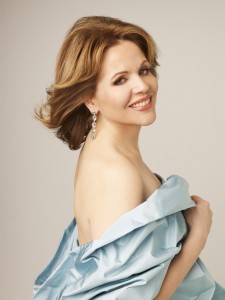 Renée Fleming, soprano
Renée Fleming, soprano
Sunday, January 16 | 4 pm
Hill Auditorium
One of the most beloved and celebrated musical ambassadors of our time, soprano Renée Fleming captivates audiences with her sumptuous voice, consummate artistry, and compelling stage presence. In addition to commanding the stages of the great opera houses of the world, she hosts the Metropolitan Opera’s Live in HD Series for movie theaters and television with behind-the-scenes interviews. Her fame is such that perfumes, desserts, and flowers have all been named after her, but those superficial accolades pale in comparison to her devoted following of opera lovers around the world. This great American soprano returns to UMS after her 1997 recital and her 2005 appearance in a concert version of Richard Strauss’s Daphne.
The Cleveland Orchestra
Franz Welser-Möst, conductor
Pierre-Laurent Aimard, piano
Tuesday, February 1 | 8 pm
Hill Auditorium
Founded shortly after the end of World War I, the Cleveland Orchestra has been guided by seven music directors, each of whom has left his mark on the widely admired “Cleveland” sound: Nikolai Sokoloff, Artur Rodzinski, Erich Leinsdorf, George Szell, Lorin Maazel, Christoph von Dohnányi, and Franz Welser-Möst, who leads the ensemble and the French pianist Pierre-Laurent Aimard in this performance.
Program
Bartók Music for Strings, Percussion, and Celeste, Sz. 106, BB 114
Schumann Piano Concerto in a minor, Op. 54
Wagner Overture to Tannhäuser
Rafał Blechacz, piano
Friday, February 11 | 8 pm
Hill Auditorium
In October 2005, the 20-year-old Rafał Blechacz, an unassuming young man from a small town in northern Poland, arrived in Warsaw for the 15th International Chopin Competition. His sensational performance won not only the competition, but also all four special prizes for the polonaise, mazurka, sonata, and concerto performance — in fact, one of the judges remarked that he “so outclassed the remaining finalists that no second prize could actually be awarded.” Blechacz was the first Pole to win the prize since Krystian Zimerman 30 years earlier. Notwithstanding his young age, his playing offers poetry, maturity, poise and concentration, as well as a phenomenal and luminous technique. “How reassuring it is to see one so young putting poetry first…we were all on another planet.” (Financial Times)
Program to be announced.
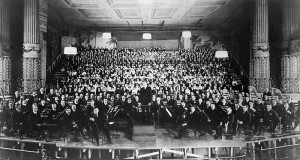 Mahler’s Symphony No. 8
Mahler’s Symphony No. 8
Detroit Symphony Orchestra
UMS Choral Union
U-M Chamber Choir
U-M University Choir
U-M Orpheus Singers
MSU Children’s Choir
Leonard Slatkin, conductor
Saturday, March 19 | 8 pm
Hill Auditorium
In commemoration of the 150th anniversary of Gustav Mahler’s birth and the 100th anniversary of his death, UMS is collaborating with the DSO and Michigan Opera Theatre to present a spectacular, not-to-be-missed performance of Mahler’s monumental Symphony No. 8, also known as “Symphony of a Thousand.” The first performance of this “choral symphony” featured a chorus of about 850, with an orchestra of 171, leading Mahler’s agent to dub to the work “Symphony of a Thousand.” While Mahler himself did not approve of the title, it nevertheless remains associated with this work, which is rarely preformed due to the massive forces required to do it justice.
Bach’s Mass in b minor
Bach Collegium Japan
Masaaki Suzuki, conductor
Thursday, March 24 | 8 pm
Hill Auditorium
Founded in 1990 by Masaaki Suzuki with the aim of introducing Japanese audiences to period instrument performance of great works of the Baroque period, the Bach Collegium Japan comprises both orchestra and chorus. The group has developed a formidable reputation through its recordings of J.S. Bach’s church cantatas, and returns to Ann Arbor after its 2003 St. Matthew Passion in St. Francis of Assisi Catholic Church. Widely regarded as one of the supreme achievements in classical music, the Mass in b minor was composed over a period of 25 years and assembled in its present form in 1749, the year before Bach died. “I have never heard period instruments played with such purity of tone, so reliably in tune. The small, precise, dramatically alert chorus breathed fire but also revealed a heartbreaking tenderness.” (The Los Angeles Times)
St. Petersburg Philharmonic
Yuri Temirkanov, conductor
Nikolai Lugansky, piano
Saturday, April 2 | 8 pm
Hill Auditorium
The Russian city of St. Petersburg boasts two world-class orchestras, and UMS has enjoyed a long relationship with each. The St. Petersburg Philharmonic has appeared in Ann Arbor five times under Yuri Temirkanov’s leadership. With a history dating back more than 200 years, the St. Petersburg Philharmonic is embedded with musical history, performing the world premiere of Beethoven’s Missa Solemnis in 1824, as well as Tchaikovsky’s Symphony No. 6, Prokofiev’s Symphony No. 1, and many works by Shostakovich. Pianist Nikolai Lugansky, who won the 1994 Tchaikovsky Piano Competition, makes his UMS debut. A Russian newspaper said of his performance in the final round of competition: “It was like getting sunstroke, a musical shock. Nobody could imagine that the soul of this unpretentious, modest young man, with his ascetic, but also poetic appearance, held such a volcano inside with inspired and resolute control.”
Program
Rimsky-Korsakov Scheherazade, Op. 35
Rachmaninoff Piano Concerto No. 2 in c minor, Op. 18
Liebeslieder Waltzes
Genia Kühmeier, soprano
Bernarda Fink, mezzo-soprano
Michael Schade, tenor
Thomas Quasthoff, bass-baritone
Malcolm Martineau, piano
Justus Zeyen, piano
Saturday, April 23 | 8 pm
Hill Auditorium
After nearly a decade in which he composed no vocal music at all, Schumann made a striking return to the genre with the Spanisches Liebeslieder song collection, which combines songs for solo voice with duets and quartets. A generation later, Brahms took the same instrumentation — vocal quartet plus four-hand piano —and composed the Liebeslieder and Neue Liebeslieder Waltzes. These three works serve the centerpiece of a program that also includes Brahms’ composition for vocal quartet and piano, performed by a brilliant quartet of musicians, including bass-baritone Thomas Quasthoff, who last appeared at UMS in a Lydia Mendessohn Theatre recital in 2000.
Program
Schumann Spanische Liebeslieder, Op. 138
Brahms Liebeslieder Waltzes, Op. 52
Brahms Four Songs from Quartets for Four Voices and Pianos, Ops. 64 & 92
Brahms Neue Liebeslieder Waltzes, Op. 65
Tickets for the 10-concert series range from $100-$650. Subscription renewal packets and brochures will be mailed in early May.
In addition to the 10-concert Choral Union Series, five events listed above will be packaged as a Piano Series (Kirov Orchestra with Denis Matsuev, Murray Perahia, Cleveland Orchestra with Pierre-Laurent Aimard, Rafał Blechacz, and St. Petersburg Philharmonic with Nikolai Lugansky). Prices for the five-concert Piano Series range from $50-$310.
Tickets to individual events on the series go on sale on Monday, August 23 (via www.ums.org) and Wednesday, August 25 (in person and by phone).


